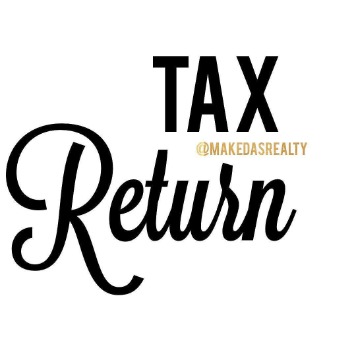Content

It is shown as the part of owner’s equity in the liability side of the balance sheet of the company. This account may or may not be lumped together with the above account, Current Debt. While they may seem similar, the current portion of long-term debt is specifically the portion due within this year of a piece of debt that has a maturity of more than one year.
Equity, also referred to as stockholders’ or shareholders’ equity, is the corporation’s owners’ residual claim on assets after debts have been paid. The accounting equation helps to assess whether the business transactions carried out by the company are being accurately reflected in its books and accounts. Assets, liabilities and equity are the three largest classifications in your accounting spreadsheet. Liabilities and equity are what your business owes to third parties and owners.
Total Assets Formula
The bread and butter lies in freeing up your human labor to work on value-based tasks, while automating manual processes. If you want to calculate the change in the value of anything from its previous values—such as equity, revenue, or even a stock price over a given period of time—the Net Change Formula makes it simple. Also known as the book value of the company and is derived from two main sources, the money invested in the business and the retained earnings. Suppose a proprietor company has a liability of $1500, and owner equity is $2000. Calculation of Balance sheet, i.e., Total asset of a company will sum of liability and equity.
- And finally, it can be used by suppliers to see if a business has accumulated a sufficient amount of equity to warrant being extended credit.
- Thirty-plus years in the financial services industry as an advisor, managing director, directors of marketing and training, and currently as a consultant to the industry.
- We want to increase the asset Cash and increase the equity Common Stock.
- The shareholders’ equity plays a vital role in calculating return on equity or ROE, which measures the successful use of a company’s equity in producing profits.
- The second source consists of the retained earnings the company accumulates over time through its operations.
Additionally, the working capital cycle shows how well a company manages its cash in the short term. Using the previous example, your total liabilities and stockholders’ equity equals $150,000 plus $450,000, or $600,000. If your total assets also equal $600,000, your balance sheet is properly balanced. When a company buys shares from its shareholders and doesn’t How To Calculate Total Assets, Liabilities, And Stockholders Equity retire them, it holds them as treasury shares in a treasury stock account, which is subtracted from its total equity. For example, if a company buys back 100,000 shares of its common stock for $50 each, it reduces stockholders’ equity by $5,000,000. The original source of stockholders’ equity is paid-in capital raised through common or preferred stock offerings.
What is Total Equity?
Not all companies will pay dividends, repurchase shares, or have accumulated other comprehensive income or loss. You don’t need to use the company’s Cash Flow Statement to compute the accounting equation. For example, a company’s brand name could be considered an asset, but it’s tough to say exactly what that brand name is worth. And, the market value of real estate and equipment is somewhat of an estimate.
How to calculate total assets from assets liabilities and equity?
Total Assets = Liabilities + Owner's Equity
The equation must balance because everything the firm owns must be purchased from debt (liabilities) and capital (Owner or stockholders equity).
The amount of your total liabilities equals the sum of the items listed in the liabilities section of your balance sheet. These items include actual dollar amounts you owe, such as accounts payable, notes payable and deferred taxes. They also include upfront payments for services or products you have yet to provide. Companies may return a portion of stockholders’ equity back to stockholders when unable to adequately allocate equity capital in ways that produce desired profits. This reverse capital exchange between a company and its stockholders is known as share buybacks. Shares bought back by companies become treasury shares, and their dollar value is noted in the treasury stock contra account.
The three features of a balance sheet and how to determine each one.
This formula differs from working capital, based on current assets and current liabilities. The three primary sections of a balance sheet are assets, liabilities and stockholders’ equity. Liabilities and equity are the two sources of financing a business uses to fund its assets. Liabilities represent a company’s debts, while equity represents stockholders’ ownership in the company.

For example, say Wasslak strikes a deal that the customer will pay SAR 600 upfront in exchange for the delivery of 30 packages each month for six months. According to this, Wasslak gets SAR 600 on December 1 for deliveries that will be made between December 1 and May 31. Accounting equation explanation with examples, accountingcoach.com. We will increase the expense account Utility Expense and decrease the asset Cash. We will increase the expense account Salaries Expense and decrease the asset account Cash. The corporation received $50,000 in cash for services provided to clients.
The SAR 600 received on December 1 is a liability account called “Unearned Revenue” (or Deferred Revenues, Customer Deposits, etc.). As the 30 packages are delivered each month, Wasslak will earn SAR 100. The above means that SAR 100 will move from the Unearned Revenue account to the Service Revenues account each month. So, as Wasslak keeps up with the agreement https://quick-bookkeeping.net/ and delivers packages, its monthly liability goes down by SAR 100, and its monthly income statement goes up by SAR 100. Shareholders ‘ equity tells you the “book value”, i.e., what is left over for shareholders after the company has paid off all its debt. Total liabilities are the sum of a company’s current liabilities and long-term liabilities.































